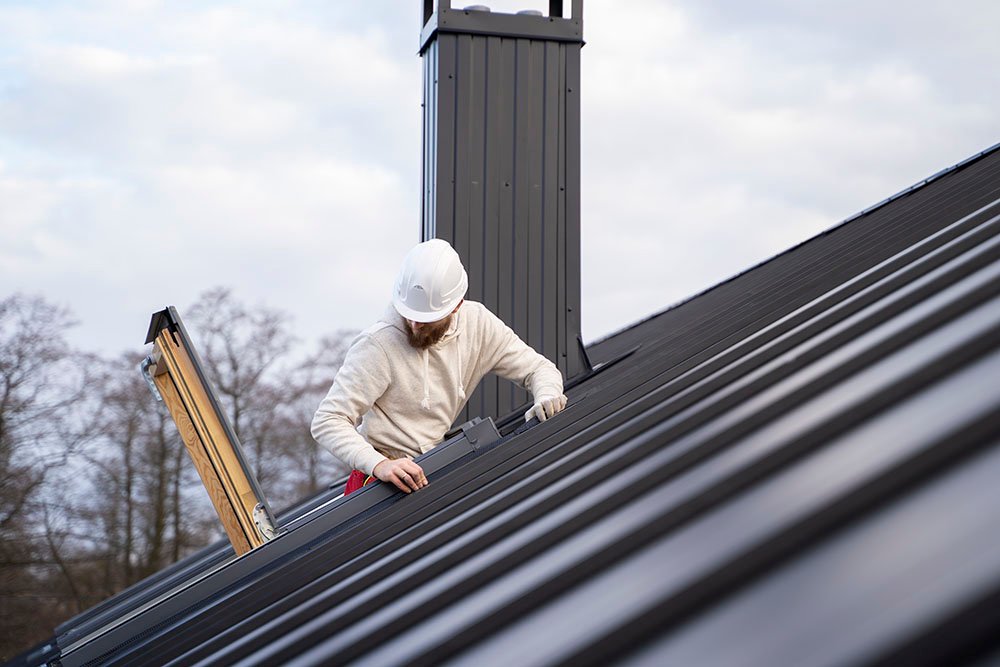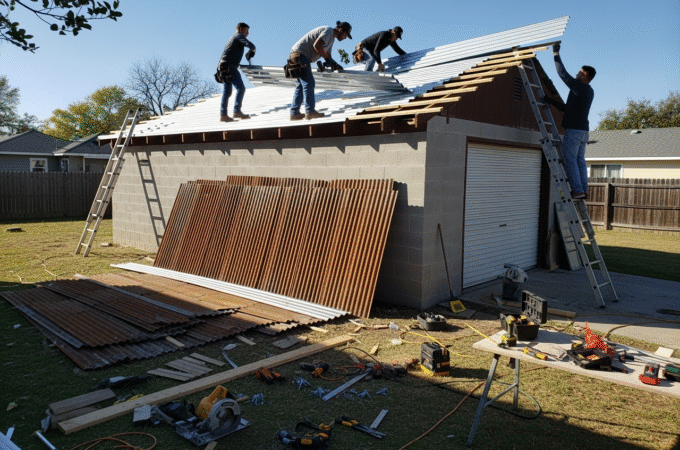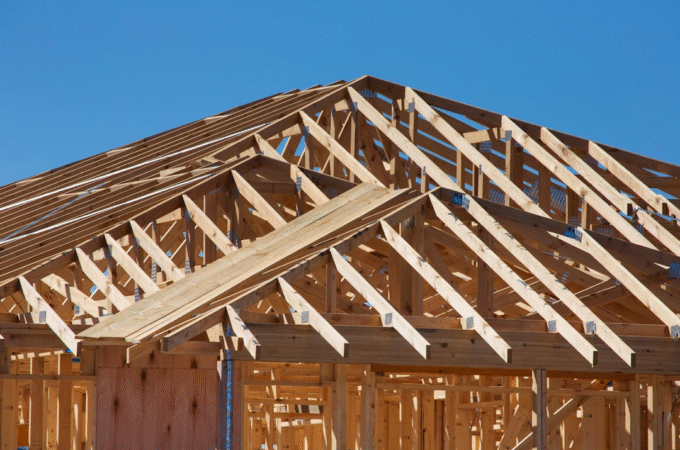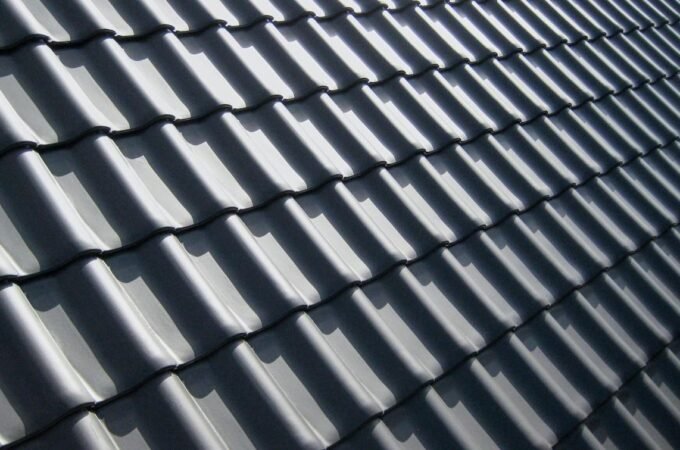
Essential Roof Maintenance Tips for Homeowners
Table of Contents
ToggleKey Takeaways
- Regular inspections help identify and address minor issues before they escalate.
- Keeping gutters clean prevents water damage and structural issues.
- Trimming overhanging branches reduces the risk of roof damage from falling debris.
- Addressing moss and algae growth preserves the integrity of roofing materials.
- Ensuring proper attic ventilation prevents moisture buildup and extends roof life.
Maintaining your roof is an essential responsibility that every homeowner should prioritize. A well-maintained roof acts as the first line of defense against harsh weather conditions, safeguarding your home from rain, snow, hail, and wind. Proactive roof care not only enhances the durability and longevity of your roof but also helps you avoid costly repairs that might arise from neglect. By devoting some time and attention to routine roof maintenance, you protect your entire property from damage and retain (or even increase) its resale value. If you ever feel uncertain about where to begin with roof upkeep or encounter issues you’re not comfortable addressing, reaching out to Denver roofing experts can provide specialized guidance and professional support to ensure your roof stays in optimal condition year-round.
Investing in regular roof maintenance is about much more than avoiding leaks or minor problems—it’s about extending the lifespan of your investment and maintaining the structural integrity of your home. Proactive care can help you spot early warning signs that would otherwise go unnoticed and address them promptly to prevent larger complications. By embracing the following roof maintenance tips, homeowners can steer clear of common hazards, preserve their home’s safety, and ensure their living environment remains dry and comfortable, no matter the season.
Regular Roof Inspections
Conducting regular roof inspections is one of the most crucial habits a homeowner can develop. Without periodic checks, minor issues can remain hidden until they result in major structural damage or costly repairs. It’s recommended to inspect your roof at least twice every year—ideally during the spring and again in the fall—to assess its condition following changing weather patterns and seasonal shifts. During an inspection, survey not only the shingles but also critical areas like the flashing around chimneys, skylights, and vent stacks. These are common trouble spots where rust, cracks, or gaps may develop, allowing moisture to penetrate your roofing system.
What to Look for During Inspections
- Loose, cracked, curling, or missing shingles, which indicate wear and tear or storm damage
- Any evidence of water pooling, soft spots, or sagging areas that could signal underlying problems or rot
- Signs of damaged, corroded, or incorrectly sealed flashing along all penetrations and transitions
- Moss, lichen, or mold growth that may accelerate roofing material deterioration
- Granule loss, often identified by shingle particles collecting in gutters, indicates the shingles have aged or are failing
By catching these warning signs early, you can schedule affordable repairs and avoid extensive, disruptive fixes that can lead to additional complications inside your home. Regular roof inspections truly are the foundation for long-term peace of mind.
Keep Gutters Clean
Gutter maintenance is a simple yet vastly important aspect of roof care. Clogged or overflowing gutters allow water to back up onto your roof, which can lead to rotted decking, damaging leaks, and even foundation issues as water pools around your home’s perimeter. Cleaning your gutters thoroughly at least two times a year—preferably after autumn leaves fall and again in early spring—helps ensure rainwater flows smoothly away from your house. Additionally, regular gutter care prevents the accumulation of organic debris that might attract pests or cause mold issues.
Best Practices for Gutter Care
- Always wear gloves and use a sturdy, stable ladder when cleaning gutters to minimize the risk of injury
- Flush the gutters with a garden hose after removing debris to check for leaks and proper drainage
- Examine downspouts and ensure they are free from blockages and direct water well away from the foundation
- Consider installing gutter guards or screens to reduce how often you need to clean and help keep larger debris out
By keeping gutters clear, you significantly lower the risk of moisture-related headaches over time.
Trim Overhanging Branches
Trees can be an asset to your yard, but their branches pose a real risk to your roof, especially during strong winds or storms. Overhanging limbs can snap off and crash onto your roof, damaging shingles, tiles, or even the roof structure beneath. Even when the weather is calm, constant contact from branches can scrape and wear down roofing materials, while a buildup of leaves and twigs accelerates gutter clogs and creates perfect conditions for moss growth.
How to Trim Safely
- Carefully prune back any limbs that are in direct contact with or hovering over your roof surface
- Maintain a perimeter of 6-10 feet between tree branches and the roofline for improved airflow and less debris
- For trees that are particularly tall or difficult to manage, hire a professional arborist to safely remove high branches without causing damage or endangering yourself
By keeping vegetation at a safe distance, you help to preserve roof health, prevent direct damage, and ensure your roof gets enough sunlight and air to naturally resist algae and moss infestation.
Address Moss and Algae Growth
Though moss and algae may appear harmless, their presence can quickly undermine your roof’s longevity and appearance. Moss acts like a sponge, trapping moisture against your shingles and potentially causing them to lift, curl, or deteriorate prematurely. Algae, recognized by black streaks, can also eat away at the limestone in asphalt shingles and diminish your home’s curb appeal. Leaving either unchecked can escalate into bigger maintenance headaches that compromise the roof’s effectiveness.
Treatment Tips
- Apply a gentle solution of water mixed with bleach (usually a 50/50 mix); spray directly on affected areas, but take care to protect landscaping below from runoff
- Install zinc or copper strips along the roof ridge, as rainwater will wash trace metals down the roof, making it less hospitable for moss and algae growth
- Ensure your roof gets plenty of sunlight and has adequate airflow by trimming back shade-providing branches
With regular cleaning and preventive steps, you can maintain your roof’s function and beauty for years to come. When in doubt, professional roof cleaners can safely remove moss and algae without harming your roofing materials.
Ensure Proper Attic Ventilation
Good attic ventilation plays a huge role in the well-being of your roof. Poor ventilation leads to excessive heat and moisture buildup, which can accelerate shingle aging, spur mold outbreaks, or cause damaging ice dams when snow melts and refreezes at the eaves during winter. Proper airflow is crucial for keeping the attic temperature closer to the outside temperature, reducing the risk of condensation, and helping your HVAC system operate efficiently.
Signs of Ventilation Problems
- Visible mold or mildew on attic rafters, insulation, or stored items
- Extremely hot temperatures in your attic during summer can bake and warp shingles
- Ice dams forming on the eaves during cold months signal improper airflow
- Unexpectedly high cooling and heating bills are a sign that your attic may not be “breathing” properly
Inspect your attic vents, soffit vents, and exhaust fans, making sure they are unobstructed and function as intended. Consulting professionals is a smart step when in doubt or if you notice persistent ventilation problems. Balanced ventilation not only extends roof life but also contributes to the comfort and safety of your entire home.
Promptly Repair Leaks
Ignoring even tiny roof leaks can quickly spiral into widespread damage, including stained ceilings, warped drywall, structural rot, and hazardous mold growth. Vigilance is key: At the first sign of a leak—such as water stains, musty odors, or bubbling paint—take action. Carefully trace leaks to their source, which often lies near damaged shingles, failed flashing, or along roof valleys. Quick, temporary patching with roofing cement or tape can buy you time, but lasting repairs should be completed as soon as possible to avoid further complications.
Preventing Leak Damage
- After heavy rain, inspect attics and upper levels of your home for new water marks or wet spots
- If needed, use tarps, roofing cement, or other water-resistant measures to prevent worsening damage until full repairs can be made
- Persistent or large leaks always warrant a prompt, professional inspection from an experienced roofing contractor
Don’t put off repairs, even if the leak appears minor; prompt attention keeps your roof and your home’s interior safe from escalating problems that are much more expensive to fix later.
Conclusion
Building good roof maintenance habits will pay dividends in reliability, safety, and peace of mind for years to come. Routine inspections, keeping gutters and branches in check, removing moss and algae, ensuring healthy attic ventilation, and making prompt repairs together form a comprehensive approach to roof care.
Anthony M. Salvatori is President of Steadfast Painting Solutions. He has 20 years of painting experience and has been operating his own company for nine years. Salvatori is proud to be leading such an incredible team of individuals with the common goal of providing excellent service and quality.





